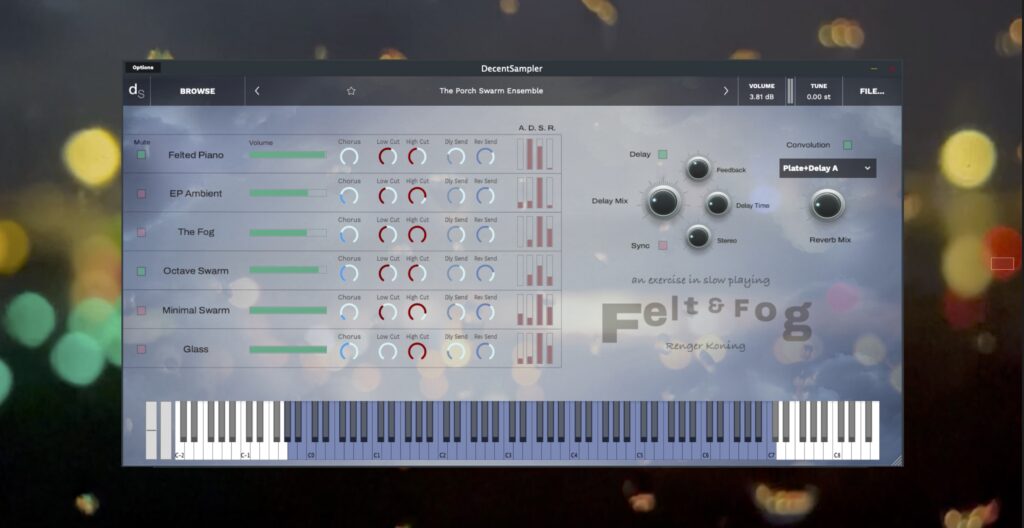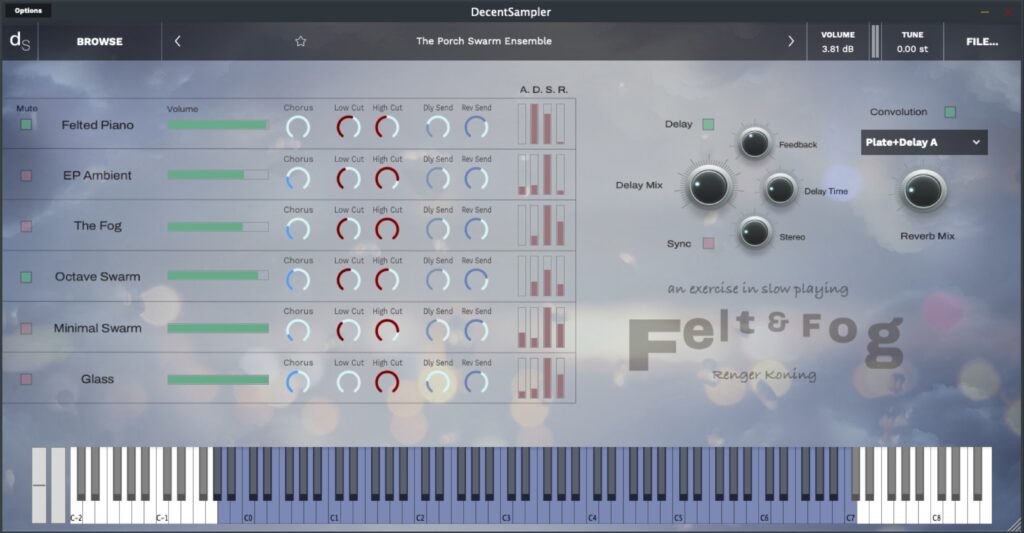
The story
For years, I’ve been fascinated by sounds that evolve and develop over time. Instead of crafting swarms within a DAW, I prefer the organic feel of ‘hand-played’ swarms — it just feels more alive. With Felt & Fog, I combined these ideas to create a unique sample library featuring six independent layers. Each layer is multi-sampled, with files ranging from 20 to 60 seconds that loop continuously (except for the Felted piano layer).
Because these layers evolve over time, playing this library is an exercise in patience — dare to hold a note or chord for 10 to even 20 seconds and let the textures bloom. Thanks to the varying loop lengths, the ambient soundscapes you create rarely repeat themselves. It’s reminiscent of the old tape loop concept Brian Eno used on his Music for Airports album.
Felt & Fog comes in two versions: a FREE edition and the full version, available at www.decentsamples.com. Introductory price: $20 (normally $39).
YouTube teaser: https://youtu.be/G8BWDpxPw3k?si=RNdWamjdHZ8RAdoa
Interface

Reviews for Felt & Fog
Leave a review to let others know what you thought of the instrument!
Inspiration & Involvement
It's a pleasure to have not only an interestingly described story behind your inspirational instruments, but also an engagingly described idea.
That's a terrific piano. All perfectly realised. Disappeared for an extended period of time exploring its presets. After getting to Hoffman Felted decided to buy the full version ;)
I really like the idea of looping. And by pressing Hold on KeyStep I get an infinite soundscape.... Great
Since recently I've been actively using the idea of looping with both loops and clips on Push 2. It's just convenient to control the length of the clip there. But for some reason I didn't think it could be combined with piano playing. So thanks for the idea.
PS
I will definitely talk about Felt & Fog (what an involving name) in my notes.PPS
Please make an update that explicitly labelled the on/off buttons for the different modes (mute, delay, sync, convolution). The way it is implemented now it's hard to distinguish whether a mode is on or off....


